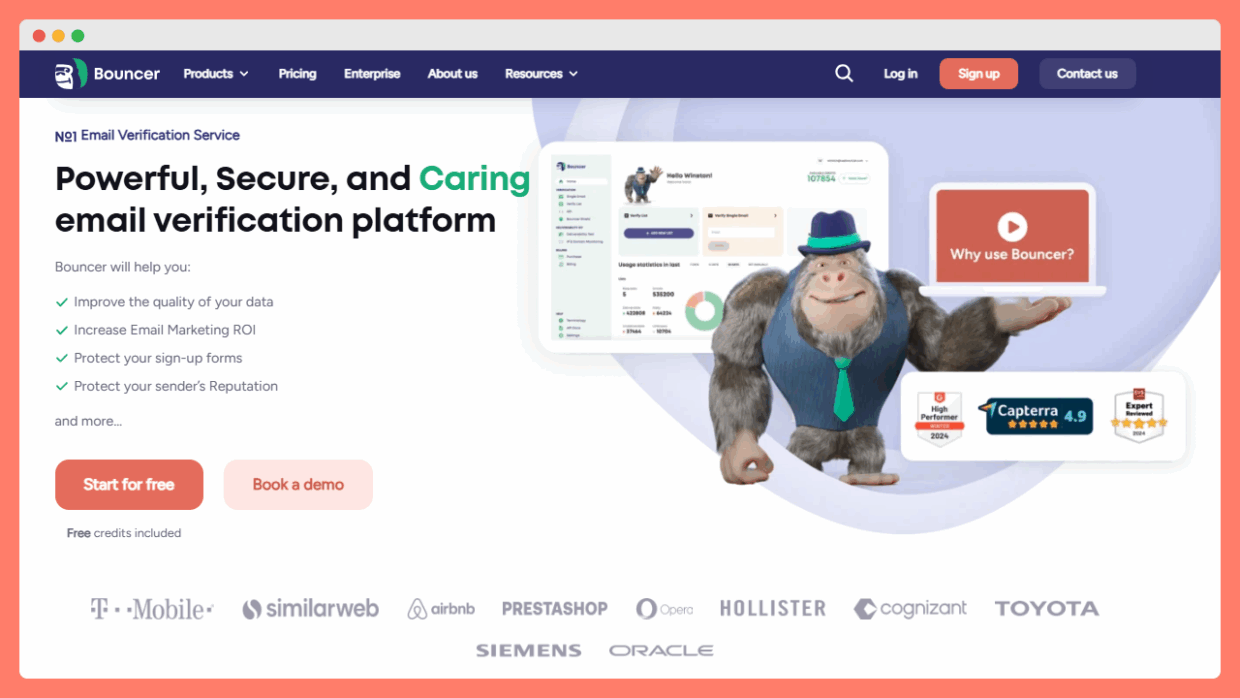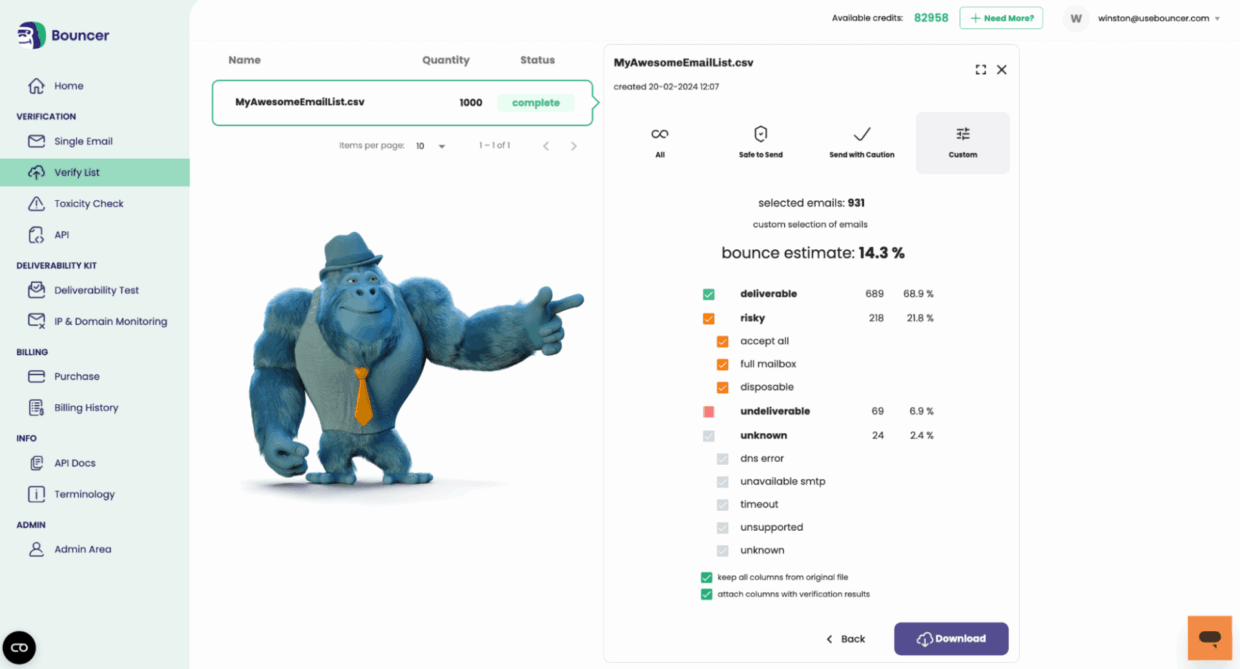RealMail is positioning itself as the ultimate tool to prevent that. With real-time validation, customizable settings, and a user-friendly interface, it’s designed for SaaS companies that care about conversion rates, account security, and clean data.
Let’s dig into what RealMail does, how it works, and when it might be worth integrating RealMail into your stack.
What is RealMail?
At its core, RealMail is an email validation tool aimed at SaaS companies looking to optimize sign-ups, reduce missed opportunities, and improve overall email deliverability.

It helps you catch:
- Fake addresses and malicious users
- Typos and formatting errors (like leaving out the dot in .com)
- Alias addresses used to dodge real registration
- Disposable email addresses and temporary emails
- Non-business emails in B2B contexts
- Full mailboxes, dead domains, or servers with broken DNS
- Spam traps and high-risk addresses that damage your marketing efforts
Instead of blindly letting users through the door, RealMail scans and verifies their email on the spot — so only high-quality addresses make it into your system.
Why does catching disposable email addresses matter?
If you’re running a SaaS product or handling product-led growth, email is your first line of connection with a registered user. It’s where onboarding starts. It’s where product updates go. And it’s the only way to recover that “forgot my password” moment.
Letting fake emails, inappropriate addresses, or disposable emails slip through doesn’t just hurt email deliverability — it burns your time, your database, and your CAC.
RealMail is built around preventing errors at the source, protecting your brand and your user journey with minimal effort.
How RealMail works: the validation process for alias addresses
The email validation process is handled through a simple API (just one endpoint), making for a minimal dev implementation. Once you’re set up, it runs checks in real time as users enter their email address. You can use it on sign-up forms, onboarding flows, and anywhere email capture is involved.
Here’s what RealMail evaluates:
- Syntax and format validation
- DNS checks for the domain’s mailbox readiness
- MX record validation
- SMTP response simulation to verify that the mailbox exists
- Identification of disposable and temporary email domains
- Detection of alias addresses and specific domains you choose to allow/block
It’s all handled via a real-time configuration panel, which lets you control what counts as valid or not.
For example, you might block free email domains like Yahoo or Gmail for business sign-ups, or allow them for personal trials. It’s all in your hands.
Limitations to keep in mind
RealMail is focused — and that’s a good thing for fake addresses malicious users lost customers. But it also means you won’t find:
- Analytics or advanced reporting out of the box
- Enrichment or social media profile matching
- Outreach campaign tools
- Lead scoring or CRM integrations
- A freemium plan — there’s no free tier beyond what your credits cover
If you need those accurate email validation features, you might want to pair RealMail with a lead gen or sales automation platform to improve email deliverability.
Is RealMail worth it?
RealMail promises a lot for a relatively simple tool — and to its credit, it does catch obvious issues like typos, temporary emails, and badly formatted addresses. But beyond that, it starts to feel like a lightweight solution dressed in heavy claims.
The email validation process is rigid and surface-level, and while the platform markets itself around customer retention and preventing errors, it lacks deeper features to actually back that up.
There’s no advanced reporting, no real enrichment, and no native integrations with the rest of your marketing efforts or data stack.
It also assumes that removing non-business emails and blocking certain domains solves qualification — which is a risky shortcut in modern SaaS where buyer behavior isn’t so black-and-white. If you’re serious about data quality and security, RealMail might not go far enough.
Why Bouncer is the better alternative for email validation process
If you’re looking for a tool that not only validates email addresses but actually supports smart decision-making in your onboarding process and outreach, Bouncer is the better choice — hands down.

Here’s why Bouncer outpaces RealMail:
- Deeper verification: Bouncer doesn’t stop at format and domain. It checks the mailbox, simulates delivery, and analyzes SMTP responses for clear insights.
- Risk signals: It flags alias addresses, disposable email addresses, and spam traps — and gives you confidence scores to act on.
- Built for scale: From 10 emails to 10 million, Bouncer is stable, fast, and made for real SaaS growth. RealMail’s architecture, by contrast, feels early-stage.
- Real integrations: You’re not copying and pasting results. Bouncer integrates with CRMs, email tools, and outreach platforms you already use.
- API-first: While RealMail markets a “one endpoint” approach, Bouncer’s API is mature, well-documented, and trusted by serious product and data teams.
- Transparent and accurate: Bouncer is GDPR-compliant, secure, and built to help you maintain a healthy database long-term — not just block typos on a sign-up form.

In short: Bouncer helps maintain your reputation, protects your domain, and gives you the accuracy and control that RealMail simply doesn’t deliver yet.

👉 Try Bouncer for free and skip the limitations.
If clean data is business-critical, don’t compromise on quality.

